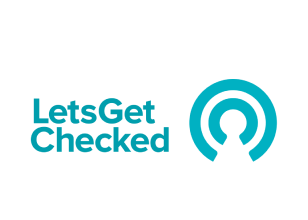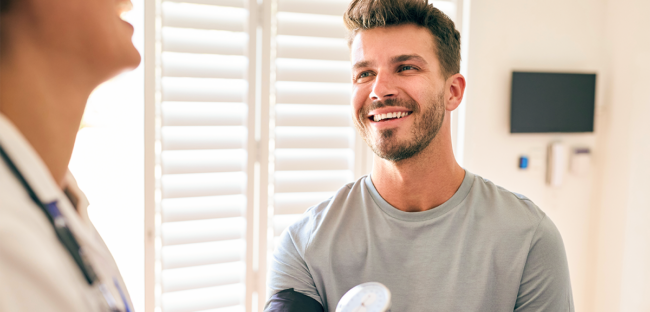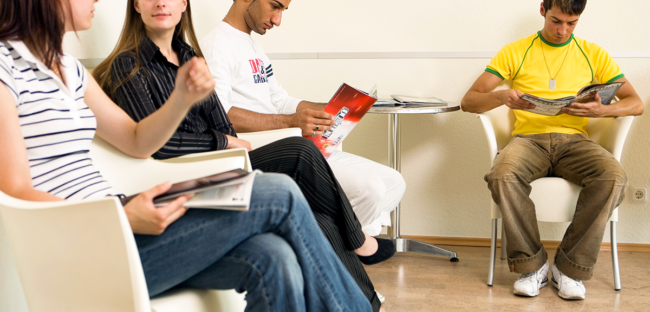
Everlywell
Includes testing for Chlamydia, gonorrhea, hepatitis C, syphilis, trichomoniasis, herpes simplex virus type 2, and HIV. Female- and male-specific testing is also available.
When you are looking for the ultimate convenience and confidentiality, at-home STD testing may be right for you. With several options to choose from to meet your needs and budget, you can get the answers you need from the comfort of your own home.
At-home STD testing is exactly what it sounds like; a test is sent to your home or preferred location with everything you need to collect a sample that is sent directly to a lab for testing. The type of sample you need to collect will depend on the specific sexually transmitted diseases (STDs) you are testing for. Most commonly, tests will require a urine or blood sample, although some may request a vaginal, anal, or oral swab. Be sure to follow the provided instructions very carefully to ensure you take your sample accurately and avoid any contamination that may compromise the accuracy of your results.

Once your sample is collected, you will need to send it back for professional lab testing. Return instructions will be provided for you and will differ depending on the testing company you choose. In any case, the labs used for at-home testing are comparable to those that are used when you visit your doctor’s office, so you can rest assured that your test is professionally analyzed.
The prices listed on each company website show out-of-pocket costs for each STD test. However, some can be covered by insurance, making it affordable and convenient.
One important piece to note when choosing an at-home STD test is that there is more potential for user error, potentially giving you incorrect results. You will also need to know what STD you need to test for, so if you are unsure of what you may have been exposed to, it’s possible you may need to purchase multiple tests. Also, because there is no doctor referral for these tests, you are responsible for contacting a physician as soon as possible for follow-up treatment if necessary.

Includes testing for Chlamydia, gonorrhea, hepatitis C, syphilis, trichomoniasis, herpes simplex virus type 2, and HIV. Female- and male-specific testing is also available.

Includes testing for individual sexually transmitted diseases or several, depending on the option chosen, with the total box testing for 14 different STDs. There is also testing for couples, older adults, and more.

Includes testing for Chlamydia, gonorrhea, trichomoniasis, HIV, syphilis, Gardnerella, mycoplasma, ureaplasma, herpes simplex virus 1 and 2, and hepatitis B and C.

Discreetly purchase your STD lab order online or over the phone and get same-day testing at a private lab with no appointment needed.
Delivery
*pending instructions followed correctly
Results
5-10 days after sample received
Privacy
Discreet shipping and return address
Generic mail packaging
Delivery
2-8 days after order ships
Results
5-7 business days after sample received
Privacy
Discreet packaging
Confidential test results
Delivery
Standard: 5-7 days after order ships
Express: 1-3 days after order ships
Privacy
2-5 business days after sample received
Results
Generic, plain packaging
No reference to LetsGetChecked
After your test sample is processed and the results are ready, you’ll be notified one of two ways: If the results are negative, you will be notified via email. If you test positive, you will be contacted by a board-certified physician for a free consultation to talk through the next steps. If an appropriate treatment is available, they are able to prescribe for you. The prescription will need to be paid for by you, either out of pocket or through your insurance. All results will be accessible on the secure online platform within your account on an easy-to-understand report.
Once results are ready, you will receive an email notification with a link to view them within the secure portal. If you test positive, you are entitled to a complimentary phone consultation with a myLAB Box physician affiliated for treatment evaluation for chlamydia, gonorrhea, and trich. Depending on symptoms, the physician may be able to send a prescription to your chosen pharmacy. The prescription will need to be paid for by you, either out of pocket or through your insurance.
Once your results are ready, they will be available in your secure online account. If you test positive, you can choose to start a virtual consultation with a LetsGetChecked healthcare provider for an additional $39. If appropriate treatment is available, medication can be prescribed to your local pharmacy at an additional cost.
As long as your sample is collected and preserved correctly, these are processed by certified laboratories, meaning results from an at-home test are comparable to those you would receive from a physician’s office.
Test prices will vary depending on the company you choose and the STDs you are testing for and can range from $50 to $500.
While there are minimal actions you need to take before testing, there are a few things to note. If your test requires a urine sample, refrain from using the restroom for two hours prior to testing. If a vaginal swab is needed, do not use any douching products or vaginal creams within 24 hours before testing. If you are on your period, its recommended to wait at least 2 days after it has ended before testing as certain samples may be contaminated by the blood. Be sure to follow all step-by-step instructions provided by the testing company for the most accurate results.
Each company will have its own results window, but in general, once the lab has received your sample, results will be shared with you 24 – 72 hours after processing. This turnaround time does not take into account how long it takes to ship your sample back to the lab. This will also depend on the type of sample taken and the type of STD being tested for.
Contact your physician right away for an appointment. Treatment for STDs will be more effective when started early. You will also need to contact all sexual partners so they may be tested, as well, to help stop any further spread.
In many states, the minimum age for ordering an at-home STD test is 18, but some allow individuals 14 years and older to order. You may need to verify your age with the at-home testing company you are ordering from prior to requesting one. If you are under the required age, contact your physician or local public health facility.
This will depend on what STD you may have been exposed to or what you are testing for. Some STDs will show up on test results within a few days, others may take a few weeks, and some, like HIV, may not show up until around three months after. If you test too soon, you may receive a false negative, in which case, another test will be needed after a few weeks for verification.
No! Many STDs can be present without exhibiting any symptoms until the disease becomes more advanced, making it more difficult to treat and potentially causing other health concerns. If you know you’ve been exposed, or simply think you may have been exposed, you should get tested as soon as possible.
Choosing the appropriate STD test is crucial for giving you the accurate results and peace of mind you need. Before making your selection, consider your unique needs, risk factors, and preferences. Each STD testing type offers options for various infections, whether individually or as part of a more comprehensive screening.
Compare STD Providers
In addition to at-home STD testing, you also have the option of having a test performed by a medical professional in a private lab or public health center. Our goal is to help you feel empowered to take control of your sexual health. Explore additional available testing methods:

Private laboratories ensure your STD test is performed correctly to give you the results you need. Professional lab technicians will retrieve your sample and handle sending it to the testing lab for your results.

Public health clinics provide STD testing at little or no cost to the local community. These locations are an excellent resource for those without insurance or may be unable to access a primary care physician or private lab location in a timely manner.